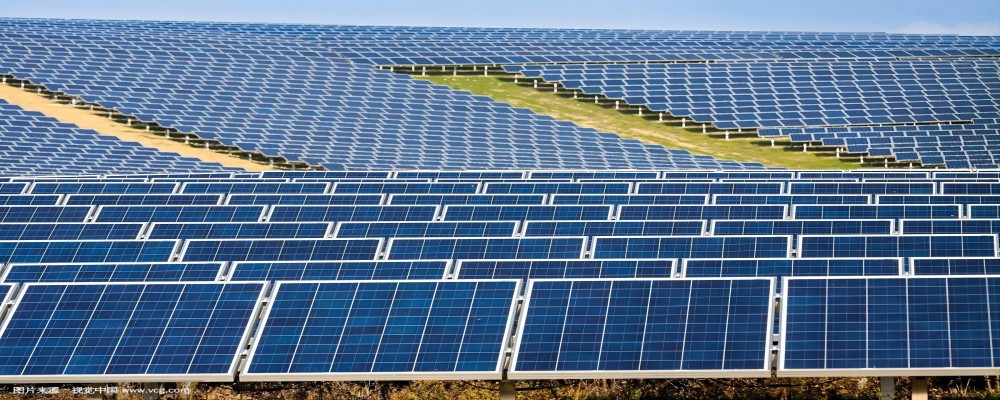
Un sistema di generazione di energia solare è un sistema di dispositivi che utilizza i componenti della batteria per convertire direttamente l'energia solare in energia elettrica . In condizioni di luce, il modulo a celle solari genera una certa forza elettromotrice e l'array quadrato di celle solari è formato attraverso la connessione in serie e in parallelo dei moduli, in modo che la tensione dell'array quadrato soddisfi i requisiti della tensione di ingresso del sistema . Il sistema fotovoltaico è composto da array di celle solari, pacchi batteria, controller di carica e scarica, inverter, armadi di distribuzione dell'alimentazione CA, sistemi automatici di inseguimento solare, sistemi automatici di rimozione della polvere dei moduli solari e altre apparecchiature.
Composizione del sistema di generazione di energia solare fotovoltaica
Il sistema fotovoltaico è composto da array di celle solari, pacchi batteria, controller di carica e scarica, inverter, armadi di distribuzione dell'alimentazione CA, sistemi automatici di inseguimento solare, sistemi automatici di rimozione della polvere dei moduli solari e altre apparecchiature. Le funzioni di ciascuna parte dell'apparecchiatura sono:
1. Celle solari
Nel caso di luce (sia essa solare o luce prodotta da altri corpi luminosi), la batteria assorbe energia luminosa, e ai due capi della batteria si accumulano cariche di segno opposto, che generano "tensione fotovoltaica", che è l '"effetto fotovoltaico" "Sotto l'azione dell'effetto fotovoltaico, le due estremità della cella solare generano forza elettromotrice, che converte l'energia luminosa in energia elettrica, ed è un dispositivo di conversione dell'energia. Le celle solari sono generalmente celle di silicio, che sono divise in celle solari in silicio monocristallino, celle solari in silicio policristallino e celle solari in silicio non cristallino.Ci sono tre tipi di celle solari in silicio cristallino.
Caratteristiche della materia prima:
Celle: incapsulate con celle solari in silicio monocristallino ad alta efficienza (superiore al 16,5%) per garantire una generazione di energia sufficiente da parte dei pannelli solari.
Vetro: vetro scamosciato temprato a basso contenuto di ferro (noto anche come vetro bianco) con uno spessore di 3,2 mm e una trasmissione della luce superiore al 91% nell'intervallo di lunghezze d'onda (320-1100 nm) della risposta spettrale della cella solare, per luce infrarossa maggiore di 1200 nm Ha un'alta riflettività. Allo stesso tempo, il vetro può resistere alla radiazione dei raggi ultravioletti del sole e la trasmissione della luce non diminuisce.
EVA: Use a high-quality EVA film layer with a thickness of 0.78mm added with anti-ultraviolet agent, antioxidant and curing agent as the sealant of solar cells and the connection agent with glass and TPT. It has high light transmittance and anti-aging ability.
TPT: The back cover of the solar cell—the fluoroplastic film is white and reflects sunlight, so the efficiency of the module is slightly improved, and because of its high infrared emissivity, it can also reduce the operating temperature of the module, and also It is beneficial to improve the efficiency of the components. Of course, the fluoroplastic film firstly has basic requirements such as aging resistance, corrosion resistance, and airtightness required by solar cell packaging materials.
Frame: The aluminum alloy frame used has high strength and strong mechanical shock resistance. It is also the most valuable part of home solar power generation.
2. Battery pack
Its function is to store the electric energy emitted by the solar cell square array when it is illuminated and can supply power to the load at any time. The basic requirements for the battery pack used in solar cell power generation are: a. low self-discharge rate; b. long service life; c. strong deep discharge capability; d. high charging efficiency; e. less maintenance or maintenance-free; Wide range; g. Low price. At present, the batteries used in conjunction with solar power generation systems in my country are mainly lead-acid batteries and nickel-cadmium batteries. For lead-acid batteries above 200Ah, fixed or industrial sealed maintenance-free lead-acid batteries are generally selected, and the rated voltage of each battery is 2VDC; for lead-acid batteries below 20OAh, small-scale sealed maintenance-free lead-acid batteries are generally used, each Only the rated voltage of the battery is 12VDC.
3. Charge and discharge controller
It is a device that can automatically prevent the battery from overcharging and over-discharging. Since the cycle charge and discharge times and discharge depth of the battery are important factors that determine the service life of the battery, a charge and discharge controller that can control the overcharge or overdischarge of the battery pack is an essential device.
4. Inverter
A device that converts direct current into alternating current. Since solar cells and batteries are DC power sources and the load is AC loads, an inverter is essential. According to the operation mode, inverters can be divided into independent operation inverters and grid-connected inverters. Stand-alone inverters are used in stand-alone solar cell power generation systems to supply power to independent loads. Grid-connected inverters are used in grid-connected solar cell power generation systems. Inverters can be divided into square wave inverters and sine wave inverters according to the output waveform. The square wave inverter circuit is simple, the cost is low, but the harmonic component is large, and it is generally used in systems with a few hundred watts or less and low harmonic requirements. Sine wave inverters are expensive, but can be applied to various loads.
Inverter protection functions: a, overload protection; b, short circuit protection; c, reverse connection protection; d, undervoltage protection; e, overvoltage protection; f, overheating protection.
5. AC power distribution cabinet
Its main function in the power station system is to switch the backup inverter to ensure the normal power supply of the system, and also to measure the power of the line.
GEM Battery is a battery and solution provider for major large-scale energy storage projects around the world. Our professional team will design the most optimized energy storage solution and provide the safest energy storage battery for you.
Powered & Powerful!
Distributors and OEM business are warmly welcom.
Get connected with professional Solar battery manufacturer,
www.gembattery.com
sales@gembattery.com
WhatsApp: +8615959276199